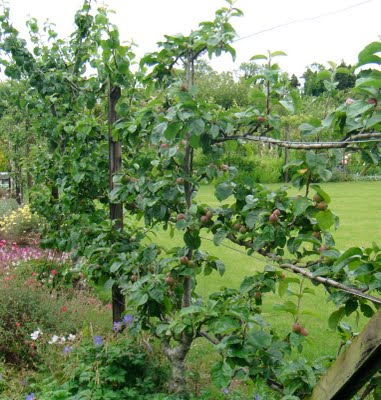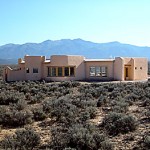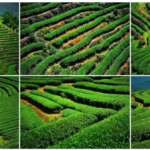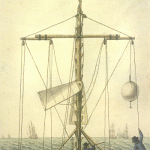“Almost anyone who has a backyard or garden would do well to plant fruit trees for the years ahead. Most fruit trees, though, take more years to mature than most of us have to prepare, and take up more space than most of us have in cities or suburbs. Luckily, only a few centuries ago master gardeners developed a way to cultivate fruit in narrow spaces – one that yields more fruit, more quickly, and with a longer growing season.
Espalier is a method of growing a dwarf fruit tree along a wall or fence, binding it for support, and bending the branches to follow certain lines, as Japanese artists do with bonsai trees. Most gardeners started espaliers with a “maiden,” a one-year-old sapling that had not yet forked, and tied it to a staff of wood to keep it straight. Then they tied the desired branches to the fence or wall as they emerged, bending and pruning aggressively as the tree grew.
With the tree’s natural growth concentrated into only two dimensions, it creates many spurs looking for a chance to spread, creating more flowers and fruit than their conventional counterparts, and earlier in the trees’ life. The fruit can be picked casually while standing or sitting, with no need for the ladders or devices needed to pick many other fruit trees, and no risk of injury. Growing a tree against a south-facing wall has another advantage; not only does the tree receive maximum light and heat, but the thermal mass of the wall absorbs the heat and provides shelter from the wind. In this way trees get a longer growing season, and can grow in cooler climates than they would ordinarily tolerate.”
Read more: Fences of fruit trees. Related: Irish hedgerows.





